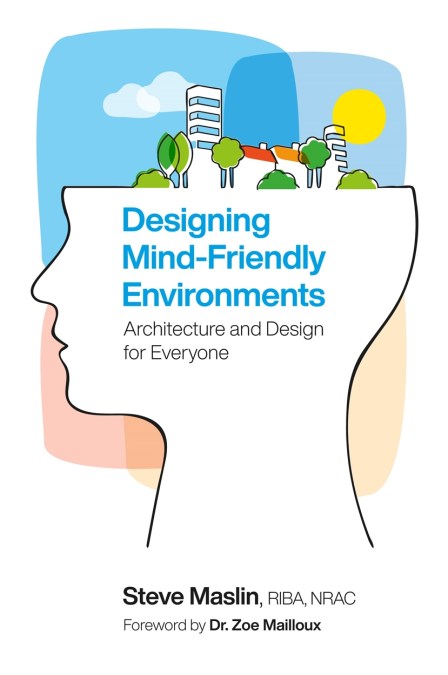Designing Mind-Friendly Environments
On sale
21st December 2021
Price: £27.99
Exploring the impact of the built environment and design on people with a range of neurological experiences, including autism, dementia, dyslexia and dyspraxia, this comprehensive guide provides project commissioners, architects and designers with all the information and personal insight they need to design, create and build ‘mind-friendly’ environments for everyone.
Assimilating knowledge from medical, therapeutic, social and educational spheres, and using sensory integration theory, the book explores the connection between our minds and our surroundings and considers the impact of the environment on the senses, well-being and neurodiverse needs of people. The book shows how design adaptations to lighting, acoustics, temperature, surfaces, furniture and space can positively benefit the lives of everyone across a range of environments including workplaces, retail, sport and leisure, domestic, educational institutions, cultural and civic spaces, outdoor spaces and places of worship.
Universal in its approach and written by an experienced architect and inclusive design consultant, this book is essential reading for professionals in architecture and design, education, organisational psychology, business management and occupational therapy.
Assimilating knowledge from medical, therapeutic, social and educational spheres, and using sensory integration theory, the book explores the connection between our minds and our surroundings and considers the impact of the environment on the senses, well-being and neurodiverse needs of people. The book shows how design adaptations to lighting, acoustics, temperature, surfaces, furniture and space can positively benefit the lives of everyone across a range of environments including workplaces, retail, sport and leisure, domestic, educational institutions, cultural and civic spaces, outdoor spaces and places of worship.
Universal in its approach and written by an experienced architect and inclusive design consultant, this book is essential reading for professionals in architecture and design, education, organisational psychology, business management and occupational therapy.
Newsletter Signup
By clicking ‘Sign Up,’ I acknowledge that I have read and agree to Hachette Book Group’s Privacy Policy and Terms of Use
Reviews
Designing Mind-Friendly Environments is an illuminating and thought-provoking book in which Maslin offers rich professional and personal insights into how design and the environment we live and work in affect our health and wellbeing. Teaching us much about our senses and the deeply personal act of perceptual experience along the way, Maslin's book firmly places the person at the centre of design. This is a must-read for anybody interested in inclusive design and a sustainable future.

